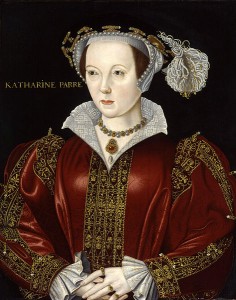 On this day in 1548, Mary Seymour, daughter and only child of Catherine Parr, Queen Dowager, and Thomas Seymour, Baron Seymour of Sudeley, was born at Sudeley Castle in Gloucestershire.
On this day in 1548, Mary Seymour, daughter and only child of Catherine Parr, Queen Dowager, and Thomas Seymour, Baron Seymour of Sudeley, was born at Sudeley Castle in Gloucestershire.
Catherine Parr died of puerperal fever on 5th September 1548, just six days after the birth of Mary, and Thomas Seymour was executed as a traitor on 20th March 1549, leaving Mary orphaned at the age of just seven months. We know that Catherine Parr’s friend, Katherine Brandon (née Willoughby), the Duchess of Suffolk, was appointed as Mary’s guardian, because she appealed to William Cecil to talk to the Duke of Somerset about helping her with the upkeep of Mary’s household, which was the household of a Queen’s daughter and therefore very expensive to run. The Duchess must have been very relieved in January 1550 when an act of Parliament allowed Mary to inherit her father’s property – money would be forthcoming at last.
But that is the last we hear of little Mary Seymour, who would have been around sixteen months-old when she was allowed to inherit Thomas Seymour’s remaining property. She just disappears from the records, and never claimed her inheritance.
What happened to the little girl has always been a mystery, but historian Linda Porter writes of a poem that might just tell us the fate of Catherine Parr’s daughter. The poem, from a Latin book of poem and epitaphs written by Catherine Parr’s chaplain, John Parkhurst, in 1573, reads as follows:-
“I whom at the cost
Of her own life
My queenly mother
Bore with the pangs of labour
Sleep under this marble
An unfit traveller.
If Death had given me to live longer
That virtue, that modesty,
That obedience of my excellent Mother
That Heavenly courageous nature
Would have lived again in me.
Now, whoever
You are, fare thee well
Because I cannot speak any more, this stone
Is a memorial to my brief life.”
Linda Porter is of the opinion that, although no name is given, it must be the epitaph of Mary Seymour and that she did, indeed, die young. Porter ponders whether she may have been buried at the Lincolnshire estate of the Duchess of Suffolk, near Grimsthorpe. We just don’t know.
Christine Hartweg wrote an excellent article on Mary Seymour on her blog – see Who Cared for Little Mary Seymour’s Upkeep?
Notes and Sources
- This article is taken from On This Day in Tudor History by Claire Ridgway, p405-406
- Lady Mary Seymour: An Unfit Traveller by Linda Porter, published in History Today Volume: 61 Issue: 7 2011